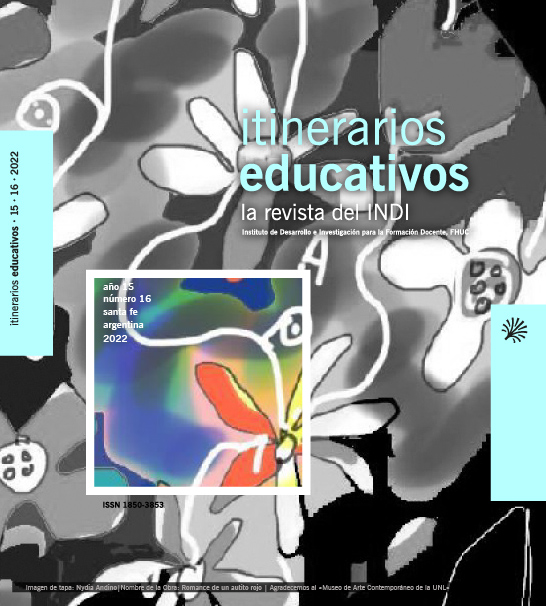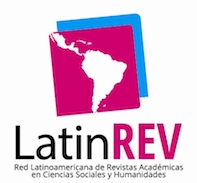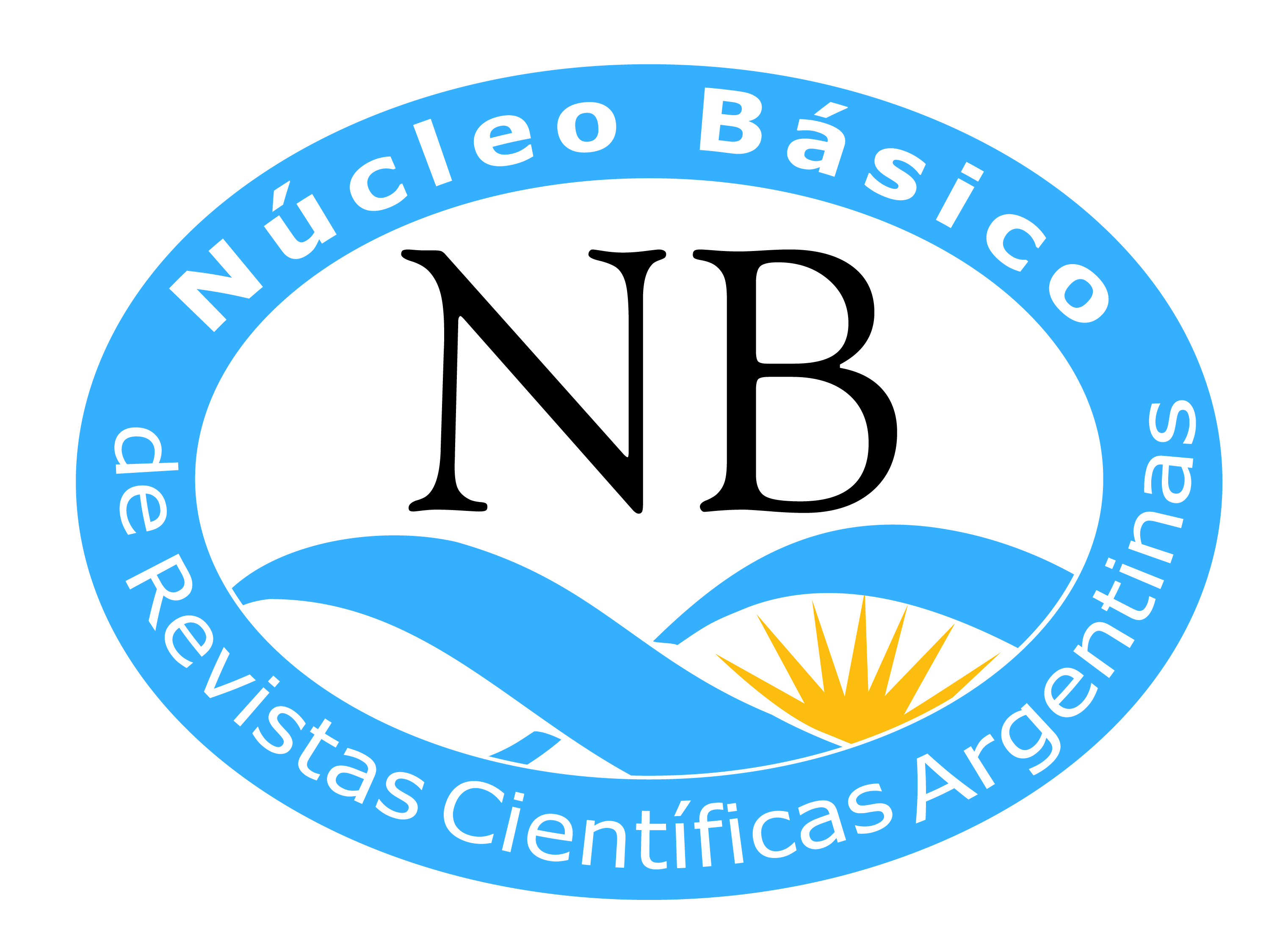Civics studies classes as a scenario for learning and waiting
DOI:
https://doi.org/10.14409/ie.2022.16.e0023Keywords:
time, waiting, power, secondary education, civics studiesAbstract
This article is intended to review and delve more deeply into some lines of analysis about the ways of inhabiting classrooms in relation to learning experiences and civic education. After gathering academic reflections on school time, we seek to incorporate the category of waiting into the analysis as a way of bringing to light the processes and experiences of power and domination that take place in classrooms. For this purpose, the ethnographic method is adopted as a key piece in the effort to overcome some of the antinomies that are debated in the field of educational research. These reflections are based on field work carried out for a case study in secondary schools[U1] of Argentina.
References
Abadzi, H. (2007). Absenteeism and Beyond: Instructional time loss and consequences. Policy research working paper, 4379, World Bank, Washington DC. https://doi.org/10.1596/1813-9450-4376
Auyero, J. (2013). Pacientes del Estado. Buenos Aires: Eudeba.
Bloom, B. (1974). Time and learning. American Psychologist, 29(9), pp. 682–688.
Bourdieu, P. (1999). Meditaciones pascalianas. Barcelona: Anagrama.
Braz, C. (2019). «Acá yo soy un pibe normal»: narrativas sobre la espera y el acceso a derechos entre varones trans en Argentina. Sexualidad, Salud y Sociedad, pp. 119–138. https://doi.org/10.1590/1984-6487.sess.2019.31.07.a
Caride Gómez, J.A. (2009). Ocio y Ciudadanía: acerca del tiempo como construcción social y educativa. Cuenca Cabeza, Manuel y Aguilar Gutiérrez, Eduardo (eds.), El tiempo del ocio: transformaciones y riesgos en la sociedad apresurada, Bilbao, Universidad de Deusto, pp. 153–176. https://doi.org/10.3989/arbor.2012.754n2004
Caride Gómez J.A.; Lorenzo Castiñeiras, J.J.; Rodríguez Fernández, M.A. (2012). Educar cotidianamente: el tiempo como escenario pedagógico y social en la adolescencia, SIPS, pp.19–60. https://doi.org/10.7179/psri_2012.20.01
Del Río, P.; Álvarez, A. (1999). La puesta en escena de la realidad cultural. Revista de Antropología Social, pp. 121–136.
Dubet, F. (2006). El declive de la institución. Barcelona: Gedisa.
Elías, N. (1989). El proceso de la civilización. México DF: FCE.
Elías, N. (1997). Sobre el tiempo. Buenos Aires: FCE.
Escolano Benito, A. (1992). Tiempo y educación. Notas para una genealogía del almanaque escolar. Revista de Educación, 298, pp. 55–79.
Escolano Benito, A. (1993). Tiempo y educación. La formación del cronosistema. Revista de Educación, 301, pp. 127–163.
Escolano Benito, A. (2000). Tiempos y espacios para la escuela: ensayos históricos. Madrid: Biblioteca Nueva.
Fernández Enguita, M. (2001). La jornada escolar. Barcelona: Ariel.
Gálvez, G.; Rockwell E.; Paradise, R.; Sobrecasas, S. (1981). El uso del tiempo y de los libros de texto en primaria. Cuadernos de Investigaciones Educativas, CINVESTAV-IPN, 1, pp. 2–39.
Geertz, C. (2003). La interpretación de las culturas. Barcelona: Gedisa.
Hargreaves, A. (1992). El tiempo y el espacio en el trabajo del profesor. Revista de Educación, 298, pp. 31–53.
Husti, A. (1992). Del tiempo escolar uniforme a la planificación móvil del tiempo. Revista de Educación, 298, pp. 271–305.
Martinic, S.; Vergara, C. (2007). Gestión del tiempo e interacción del profesor–alumno en la sala de clases de establecimientos con jornada escolar completa en Chile, REICE, 5, pp. 3–20. https://doi.org/10.22201/iisue.24486167e.2015.147.47260
Martinic, S. (2015). «El tiempo y el aprendizaje escolar: la experiencia de la extensión de la jornada escolar en Chile». Revista Brasileira de Educação, pp. 479–499.
Míguez, D.; Hernández, A. (2016). «Los sentidos de la democracia y la participación: un estudio de caso sobre la toma de escuelas en Córdoba durante 2010». Revista del museo de antropología, pp. 95–106.
Olejarczyk, R. (2017). Talleres en el «mientras tanto»: la espera en una política habitacional argentina. Bitácora urbano-territorial, 1, pp. 63–70. https://doi.org/10.15446/bitacora.v27n1.43802
Quiroz, R. (1992). El tiempo cotidiano en la escuela secundaria. Nueva Antropología, 42, pp. 89–100.
Rockwell, E. (2018). Temporalidad y cotidianeidad en las culturas escolares. Cuadernos de Antropología Social, 47, pp. 21–32. https://doi.org/10.34096/cas.i47.4945
Rubio González, J.; Cuadra–Martínez, C.; Oyanadel Véliz, C.; Castro Carrasco, P.;an González Palta, I. (2019). Tiempo escolar. Una revisión teórica sobre estudios empíricos realizados en centros educativos latinoamericanos. Perfiles Educativos, 164, pp. 100–117.
Schwartz, B. (1974). Waiting, Exchange, and Power: The Distribution of Time in Social Systems. American Journal of Sociology, 4, pp. 841–870. https://doi.org/10.1086/225629
Terigi, F. (2004). La aceleración del tiempo y la habilitación de la oportunidad de aprender. Frigerio, G. (ed.) et al. Una ética en el trabajo con niños y jóvenes. La habilitación de la oportunidad. Buenos Aires: CEM/Novedades Educativas
Terigi, F. (2010). El saber pedagógico frente a la crisis de la monocronía. Frigerio, G. & Diker, G. (ed.) Educar: saberes alternados. Buenos Aires: Del estante. Pp. 99–110.
Vázquez Recio, R. (2007). Reflexiones sobre el tiempo escolar. Revista Iberoamericana de Educación, 6, pp. 1–11.
Zenobi, D. (2017). «Esperando justicia». Trauma psíquico, temporalidad y movilización política en la Argentina actual. Papeles del CEIC, 1, pp. 1–27. https://doi.org/10.1387/pceic.16921
Downloads
Published
How to Cite
Issue
Section
License
Those authors who have publications with this magazine, accept the following terms:
The authors will retain their copyright and guarantee the journal the right of first publication of their work,
which will be simultaneously subject to the Creative Commons Recognition License that allows third parties to share
the work whenever its author and first publication this magazine.
Authors may adopt other non-exclusive licensing agreements for the distribution of the published work (eg, deposit
it in an institutional telematic file or publish it in a monographic volume) whenever the initial publication in this
journal is indicated.
Authors are allowed and advised to disseminate their work through the Internet (eg, in institutional telematic files
or on their website) before and during the submission process, which can produce interesting exchanges and increase
citations of the published work. (See The effect of open access).
















